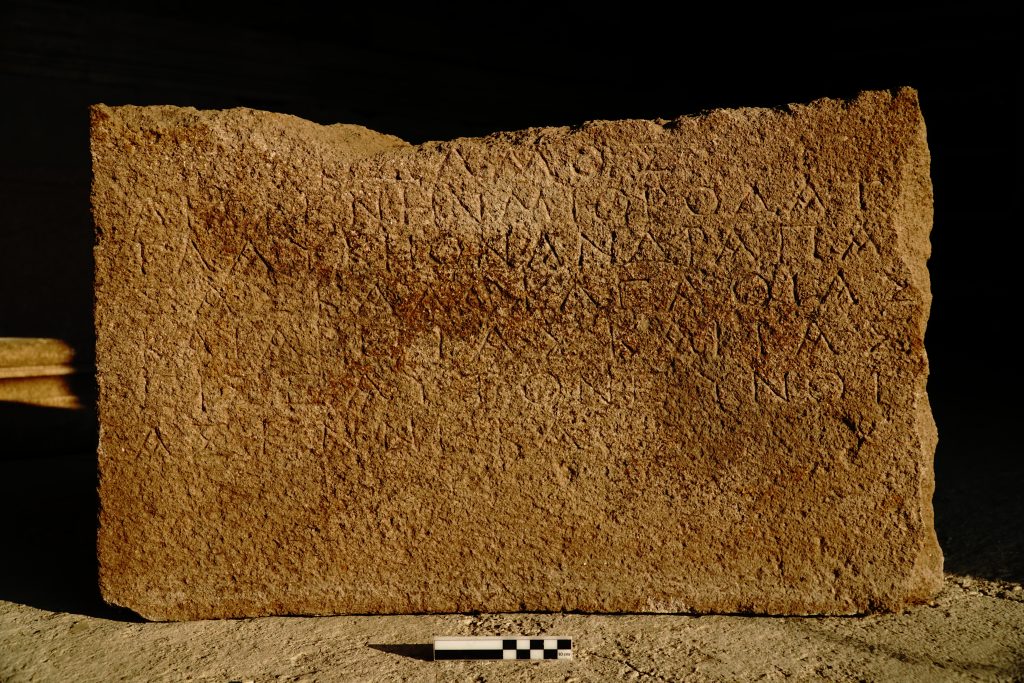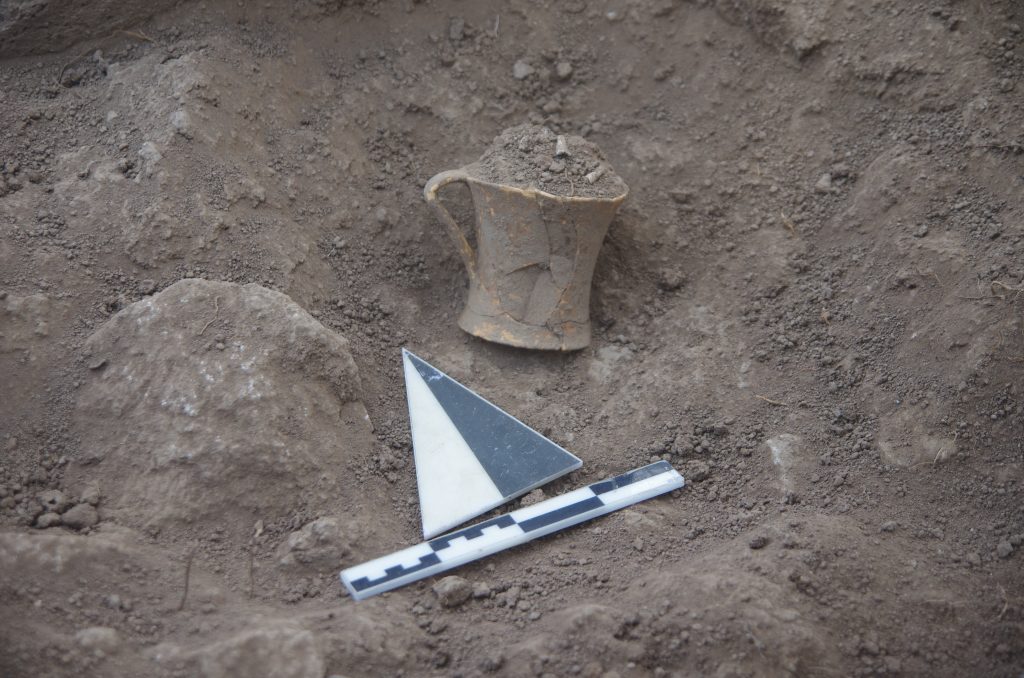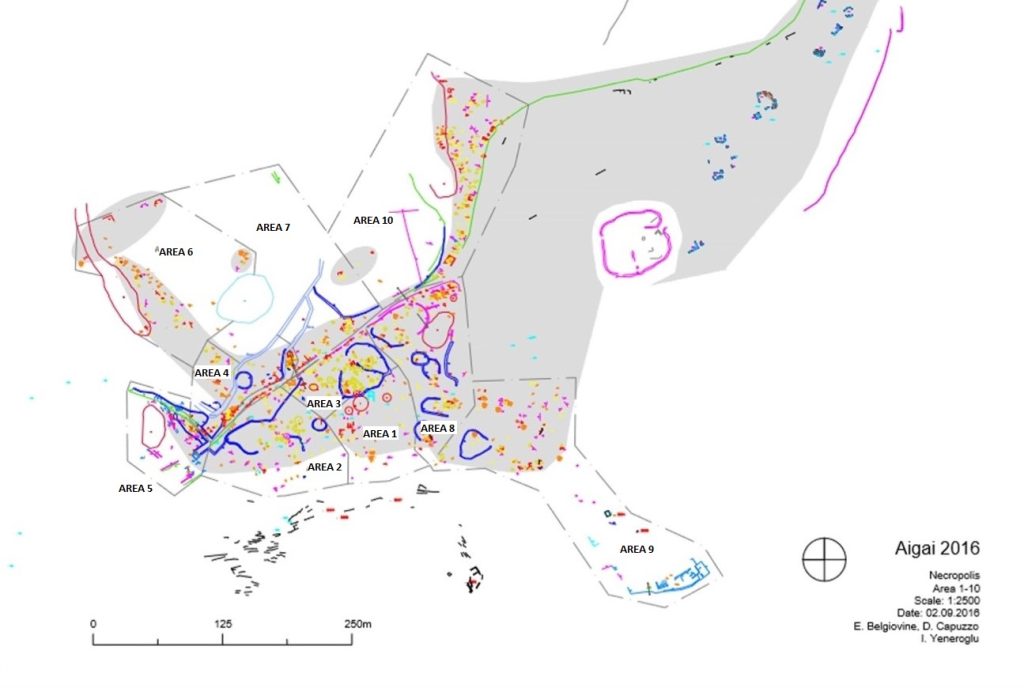
Aigai’s necropoleis are located in three areas. The largest necropolis is situated on the northeastern part of Gün Mountain and on the northern slopes of the valley where the ancient road between Gryneion and Magnesia passes. Other necropoleis are on the west and south of the city. Necropoleis were shaped around the ancient roads leading to the city. The Eastern Necropolis is on the road leading to the city from the east, possibly from the Temnos. The Southern Necropolis lies on the slopes around the arched gate, which is located on the southern The Eastern Necropolis is on the road leading to the city from the east, possibly from the Temnos. Ancient Road Passing Through the Northeastern Necropolis The Buildings in Aigai 74 walls of the city and supported by a round tower on both sides. The tombs in this area are on the stone paved ancient road that reaches the city from the direction of Kyme and Myrina.
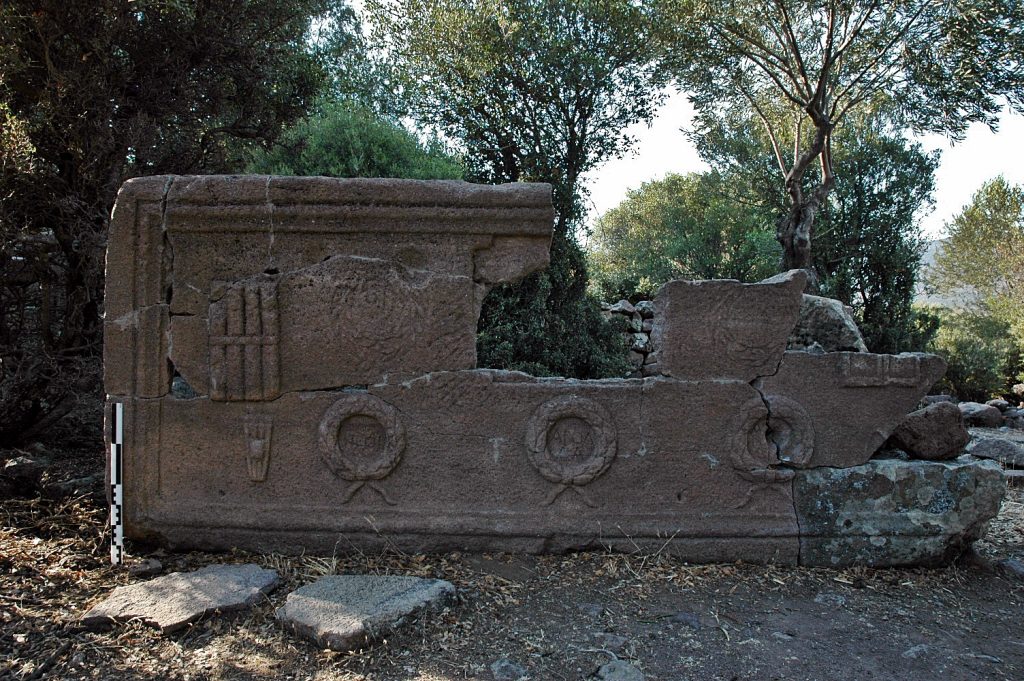
The tomb types are tumuli which bordered with short stone walls that have lost the man-made mound, the small number of chamber tombs, cist graves, square structures surrounding the cist graves, inhumation, sarcophagi and amphora tombs. The earliest tombs are contemporary with the foundation of the city and dated to the end of the 8th century BCE. The necropolis area grew in parallel with the growth of the city in the Hellenistic Period. The tombs were marked with stelai during this period. A large number of bases carved from andesite were found. The stelai that must have stood on the bases are made of local andesite stone, limestone or marble. Some exedra fragments and altar stones add richness to the necropolis area of the city despite the destruction that have lasted for centuries.
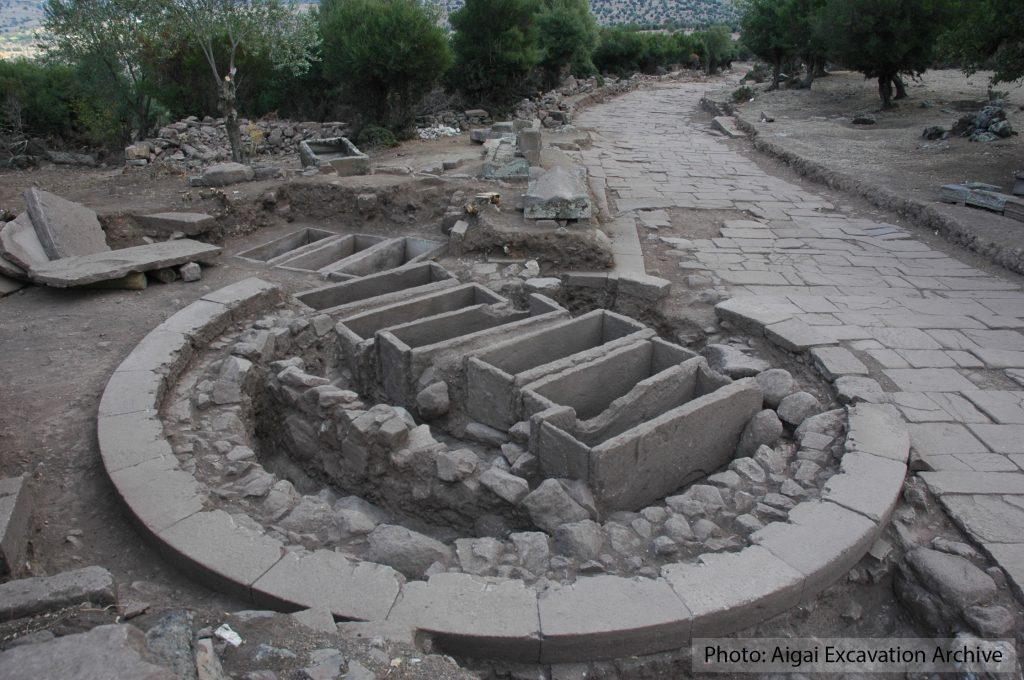
Andesite sarcophagi with frame and garland friezes dated to the 2nd and 3rd centuries CE were used extensively in the necropolis, in the Roman Period. Also, some sarcophagi were placed inside square courtyards in the Hellenistic Period. A circular burial monument dated to the 1st century BCE was unearthed right next to the ancient road passing through the necropolis during the excavation held in 2015
